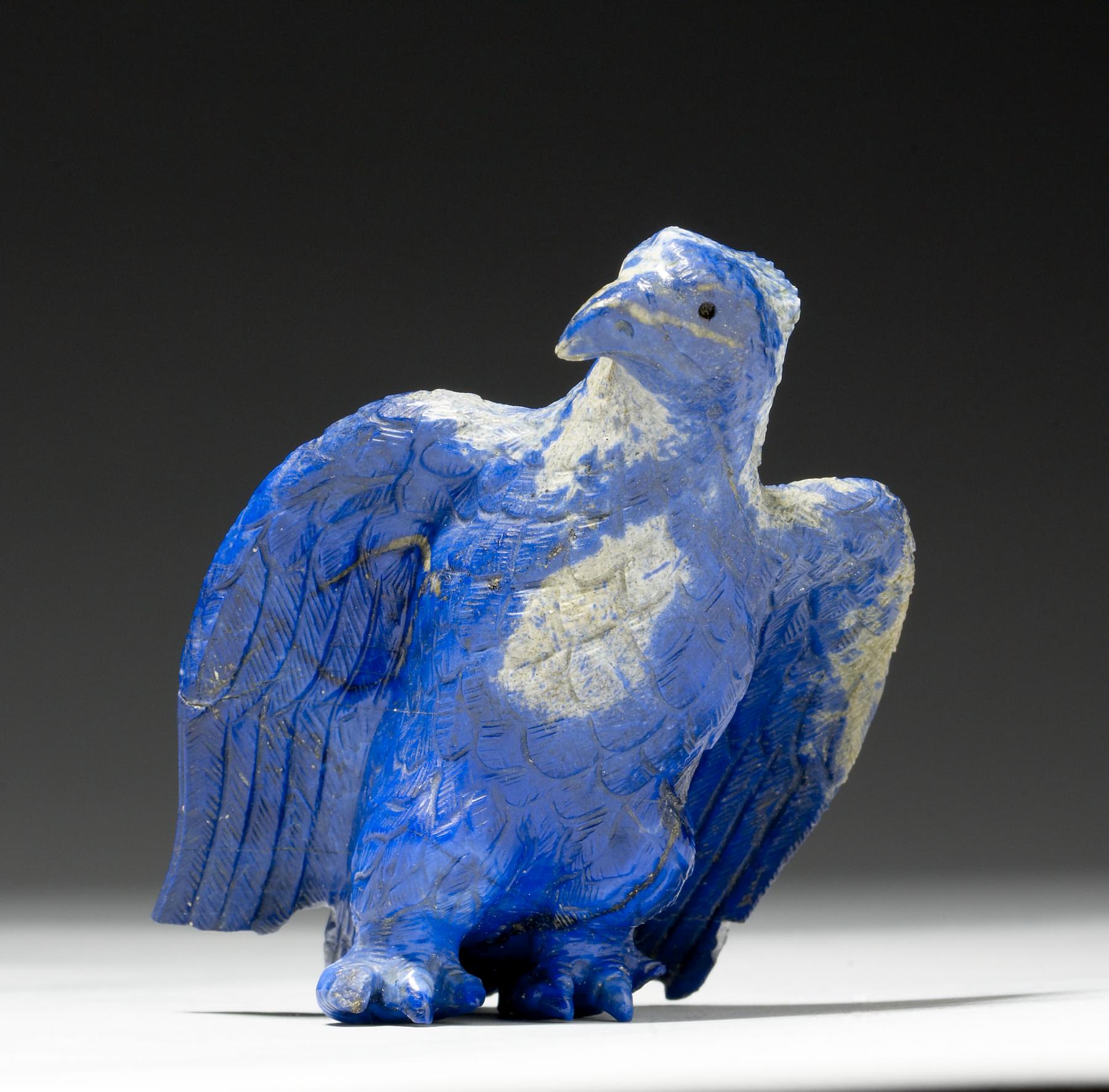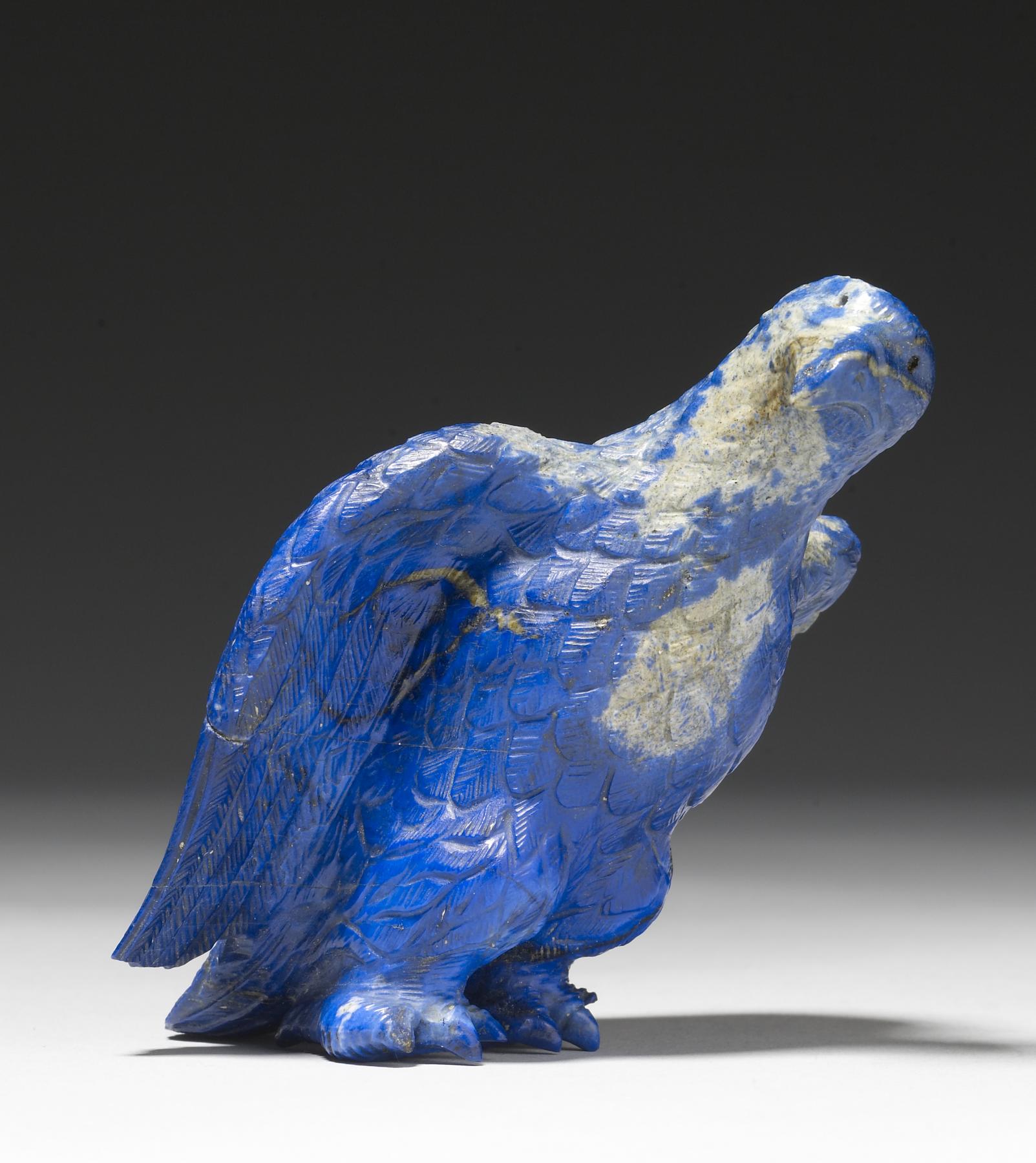Imperial Eagle
(Roman Empire )
A rare example of the gem-carver's art is this lapis lazuli eagle, possibly the finial (top) of an imperial scepter. Lapis enjoyed great popularity in the late Roman and Early Byzantine periods as its rich purple-blue color was associated with royalty. From the 3rd century on, the emperor, often appears on coins and medallions carrying an eagle scepter, emblem of victory and authority.
Provenance
Provenance (from the French provenir, 'to come from/forth') is the chronology of the ownership, custody, or location of a historical object. Learn more about provenance at the Walters.
Affaitati, Naples, by purchase; Piero Tozzi, New York, prior to 1942, by purchase; Philip B. Perlman, Baltimore, 1944, by purchase; Walters Art Museum, 1944, by gift.
Exhibitions
| 1971-1972 | World of Wonder. The Walters Art Gallery, Baltimore. |
Measurements
H: 4 1/8 x W: 2 5/8 x Standing D: 1 13/16 in. (10.5 x 6.6 x 4.6 cm)
Credit Line
Gift of Mr. Philip B. Perlman, 1944
Location in Museum
Accession Number
In libraries, galleries, museums, and archives, an accession number is a unique identifier assigned to each object in the collection.
In libraries, galleries, museums, and archives, an accession number is a unique identifier assigned to each object in the collection.
42.1406




